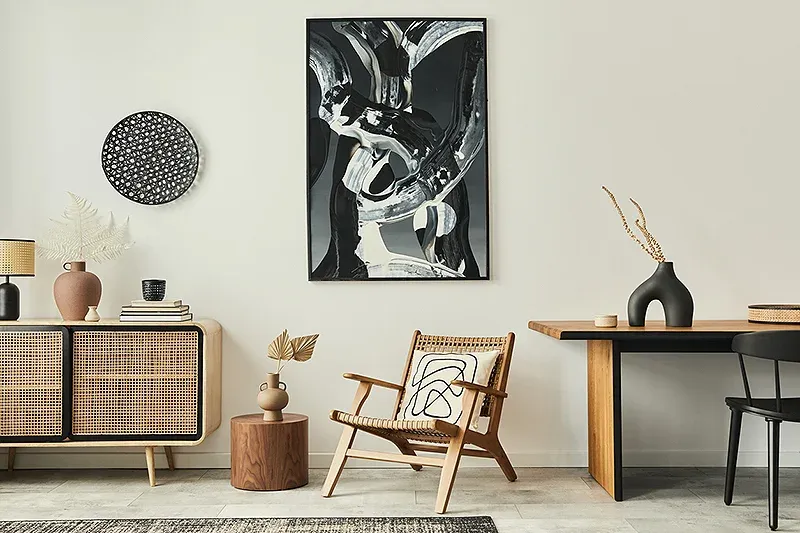How to protect and preserve your art collection
By MAS Team
Whether it’s a stunning piece you saved up for or a large sculpture passed down through generations, your art collection reflects you. It can be the heart of your home, telling a story on your walls, as well as a smart investment.
Art can hold both emotional and financial value so, while it might be easy to adopt a ‘she’ll be right’ attitude, making sure your art is protected is important. Damage or theft of your art can be a costly and stressful experience, that’s why we’re here to help you look after it.
This guide will walk you through 3 key areas of protecting your art: understanding its value, preserving your pieces from harm and ensuring you have the right insurance cover. This way you can enjoy your collection with confidence, knowing it’s safe and well cared for.

Before you can properly protect your art, you need a comprehensive record of what you own and its value. A detailed inventory is the foundation for both good collection management and, crucially, for insurance. Imagine the worst happens, a burglary or a big shake, trying to remember every detail of every piece for an insurance claim is a headache you don’t need. Having a handy record, proof of ownership and value, will help make any claim process easier.
You can create a simple spreadsheet or use a dedicated collection management app but be sure to include the following for each piece.
Keep digital copies of your inventory and supporting documents in a secure cloud-based folder, separate from your home, for security and ease of access.
While your inventory tracks the facts, a professional appraisal determines the official value. Think of it as a regular check-up for your art's financial health. This is a critical step for insurance purposes. An appraiser will research the artist, the specific work and current market trends, to provide a formal valuation document. This value is what you can use to insure your high-value pieces.
When seeking an appraiser, look for a qualified expert who specialises in the type of art you own. They will assess factors like:
It's wise to get professional valuations for your significant pieces and have them updated every 3 to 5 years, because the art market can change quickly so a current valuation ensures you are not underinsured.

The physical environment is the biggest threat to the longevity of your art. By controlling the environment, you can prevent most common types of damage. The risks for indoor and outdoor art are quite different, so we’ve broken them down below.
For paintings and other indoor works, the main culprits of damage are light, humidity and temperature.
Outdoor sculptures and installations can add beauty and character to a property, but they face a unique set of risks from weather and security threats.

You’ve invested time, passion and money in building and looking after your collection. The final, critical, step is to ensure it's protected with the right insurance. Many people assume a standard contents policy is enough, but valuable assets like art can sometimes exceed the general limits for individual items –leaving you underinsured when you need it most.
At MAS, we understand your art collection is unique. That’s why our Contents Insurance offers a range of automatic additional benefits to help you protect your art. Our policy provides cover for works of art (including paintings, sculptures, ornaments and antiques) up to $25,000 for any one item.
If you own pieces valued above this amount, or your entire collection has a significant total value, you should list them as ‘specified items’ on your policy schedule. By doing this, you ensure they are insured for their full and agreed-upon replacement value, giving you peace of mind.
We also include the following benefits:

Your art collection is something to be treasured. By taking these steps, you can get back to appreciating your art without worrying about what the future might hold.
If you’re unsure whether your current insurance is right for your collection, give us a call at 0800 800 627 or email us and our friendly team can help you out.
This article provides general information only and is not intended to constitute financial advice. Before taking out any insurance product, you should carefully consider the terms and specific policy wording. Underwriting criteria will apply.

Underinsurance is a term that means your level of insurance cover is not enough to cover the costs when something goes wrong. Learn about how it works.

Heading away on a road trip for the Easter break? With all the holiday traffic it's smart to drive extra cautiously. But if the worst happens and you're involved in a car accident, what should you do next?

Summer is here and there’s no better time to get out on the water. As well as running through your last minute gear checks for your boat, kayak, boat trailer or jet ski, make sure you’ve also got your insurance sorted.